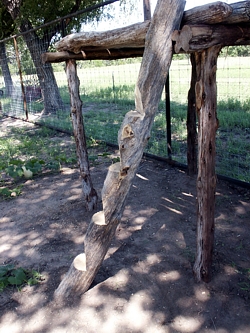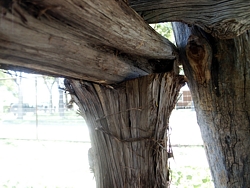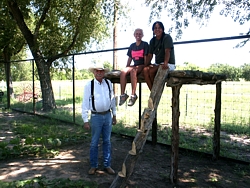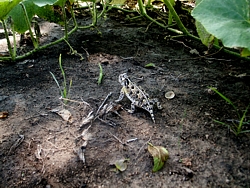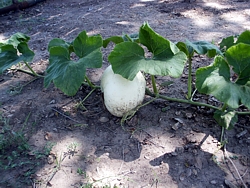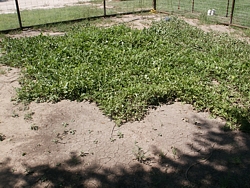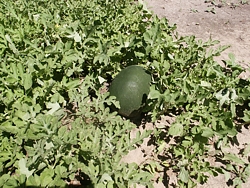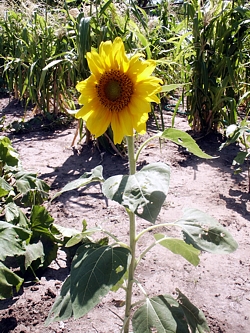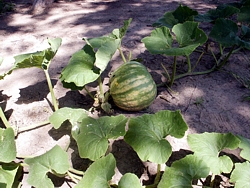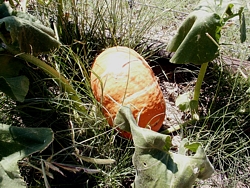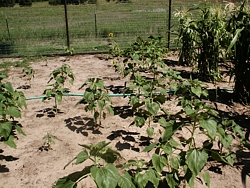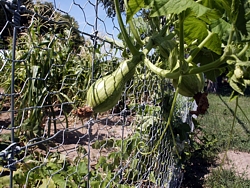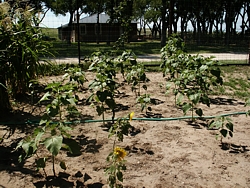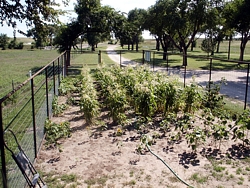 |
|

Wolf Creek Indian Garden
Update 6: Day 98 (4:00 pm, August 13th, 2009)
The Watchers’ Stage
Traditionally, a Hidatsa Watchers’ Stage was a raised platform approximately 5 x 5 foot in size and 5 feet tall constructed near the edge of their gardens (see Figure 1). Young girls and women would sit atop these raised platforms to protect the ripening corn from theft and pests. As Buffalo-Bird Woman, a Hidatsa native, related early in the 20th century to Gilbert Wilson (2005):
The season for watching the fields began early in August when green corn began to come in; for this was the time when ripening ears were apt to be stolen by horses, or birds, boys. We did not watch the fields in the spring and early summer, to keep the crows from pulling up the newly sprouted grain; such damage we were content to repair by replanting.
Girls began to go on the watchers’ stage to watch the corn and sing, when they were about ten or twelve years of age. They continued the custom even after they had grown up and married; and old woman, working in the garden and stopping to rest, often went on the stage and sang.
Two girls usually watched and sang together. The village gardens were laid out close to one another; and a girl of one family would be joined by the girl of the family who owned the garden adjoining. Sometimes three, or even four, girls got on the stage and sang together; but never more than four. A drum was not used to accompany the singing.
The watchers sometimes rose and stood upon the stage as they looked to see if any boys or horses were in the field, stealing corn. Older girls and young married women, and even old women, often worked at porcupine embroidery as they watched. Very young girls did not embroider.
Boys of nine to eleven years of age were sometimes rather troublesome thieves. They
were fond of stealing green ears to roast by a fire in the woods. Sometimes—not
every day, however—we had to guard our corn alertly. A boy caught stealing was
merely scolded. “You must not steal here again!” we would say to him. His
parents were not asked to pay damage for the theft.
We went to the watchers’ stage quite early in the day, before sunrise, or near it,
and we came home at sunset.
The watching season continued until the corn was all gathered and harvested.
|
Figure 1 Sketch of Traditional Hidatsa Watchers’ Stage (adapted from Wilson 2005) |
Figure 2 Audra Excavating a Posthole for the Garden Stage |
Figure 3 Digging Postholes is so much Fun! |
|---|---|---|
|
Figure 4 Doris and Audra with an Offering of Wichita Corn Kernels |
Figure 5 The Four Corn Kernels in the Bottom of the NE Support Posthole |
Figure 6 Looking NNE at the Completed Watchers’ Stage |
|
Figure 7 The Juniper Poles Comprising the Stage Floor |
Figure 8 View of the Supporting Beams and Underside of the Stage Floor |
Figure 9 Side View of the Notched Cottonwood Ladder |
|
Figure 10 Close-up of the SW Post and Supporting Beam |
Figure 11 Mike, Audra, and Doris after Completing Construction of the Watchers’ Stage |
Figure 12 A Texas Horned Lizard (Phrynosoma comutum) Hunting for Bugs among the Wichita Squash |
|
Figure 13 A Soccer Ball-Sized Wichita Squash |
Figure 14 The Arikara Watermelon Vines Continue to Spread and Produce New Melons |
Figure 15 Close-up of Arikara Watermelon (10” Diameter) |
|
Figure 16 Newly Emerged Hidatsa Sunflower Head |
Figure 17 Close-up of Arikara Squash |
Figure 18 Close-up of Arikara Squash Ready for Harvest |
|
Figure 19 One to Four Foot Tall Sunflowers |
Figure 20 Close-up of Wichita Squash |
Figure 21 Looking West at Sunflower Rows |
|
Figure 22 Looking the Southern Half of the Wolf Creek Indian Garden from Atop the Watchers’ Stage |
|
|
Website ©2008 Courson Archaeological Research. Unless otherwise
noted, materials from this website may be reproduced for nonprofit educational
purposes; please cite or link to source page. This page last updated
August 24, 2009
![]()








